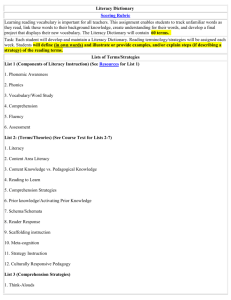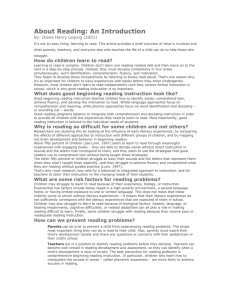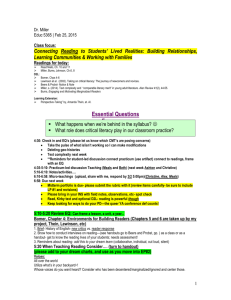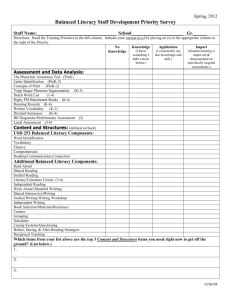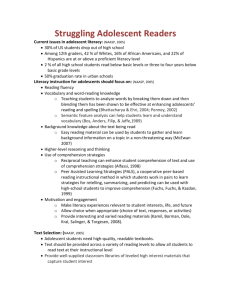Writing - menner.com.au
advertisement
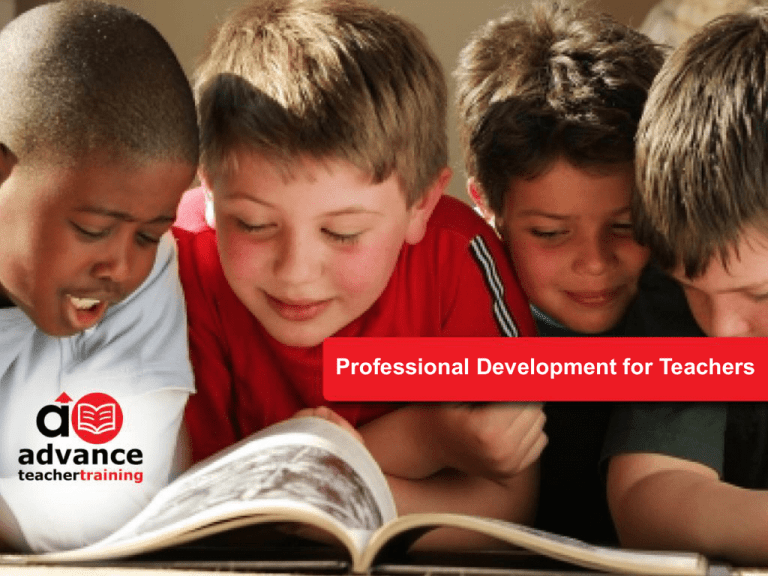
Professional Development for Teachers “The mediocre teacher tells. The good teacher explains. The superior teacher demonstrates. The great teacher inspires.” William Arthur Ward 2 Many teachers in international schools are risk takers…… 3 Few teachers in international schools have all the knowledge they need to teach reading and writing in a differentiated classroom… 4 For example… A commonly used reading methodology in reading is Round Robin Reading & yet it is not a valid methodology: It can hamper listening comprehension It can work against all students working to their full potential It can potentially cause faulty reading habits It can be a source of anxiety and embarrassment for students It can cause unnecessary subvocalization Source: Michael F. Optiz and Timothy V. Rasinski 5 For example… Teachers often assume students know how to write appropriate genres… 6 For example… Teachers often think they are teaching comprehension when they are actually testing it… 7 Kids need to read a lot (1988 Wilson & Fielding) • Kids need books they can read • Kids need to learn to read fluently Achievement % 90th 50th 10th Mins. reading/day 40.4 12.9 1.6 Words per year 2,357,000 601,000 51,000 8 “Kids need to develop thoughtful literacy” Source: “What Really Matters for Struggling Readers” Richard Allington 9 For example… A commonly used methodology with children with difficulties in reading is to teach children to sound out words… “Children need to learn to read fluently” [Allington et al.] 10 The struggling readers are: • More likely to be reading material that is too difficult for them • More likely to be asked to read aloud • More likely to be interrupted when they miscall a word • More likely to be interrupted more quickly • More likely to pause and wait for a teacher to prompt •More likely to be told to sound out a word 11 While better readers are: • More likely to be reading material of appropriate difficulty • More likely to be asked to read silently • More likely to be expected to self-monitor and self-correct • More likely to be interrupted only after a wait period or at the end of a sentence • More likely to be asked to reread or cross-check when interrupted 12 The Balanced Literacy Program: provides training to ensure teachers are experts in teaching literacy. 13 Brian Cambourne’s research shows that the most effective method for improving student learning outcomes is though providing quality professional development. 14 Balanced Literacy The Balanced Literacy Program is custom designed to meet the specific professional development needs of individual schools. 15 The company has been operating since 1999 in the United States and Australia. 16 Genre •Narrative •Exposition •Reports •Procedure •Recount •Explanation 17 Writing Guided writing Interactive writing Grammar Shared writing Language experience Spelling Model writing Independent writing Punctuation 18 Reading comprehension Prior knowledge Visualization Questioning Making connections Inferring Summarizing Synthesizing Fluency Vocabulary extension Self-monitoring 19 Reading • • • • • • Shared reading Guided reading Literature circles Language experience Learning centres Independent reading 20 Assessment in reading, writing & spelling • Running records &analysis • Observation Survey – Marie Clay • Phonological awareness • Writing analysis • Strategies with struggling readers & writer 21 Early Childhood • Developing sound, letter, word knowledge • Developing comprehension strategies with young children • Engineering writing activities to engage all children • Oral language as a spring-board for developing reading and writing • Gain insights into talking to parents about children’s literacy development • Gain an understanding of literacy expectations from birth to 5 year olds 22 23 Parent workshops • Helping your child with reading • Helping your child with writing • Helping your child with spelling • Helping when your child struggles with reading and writing • 24 Training Training can be provided through: • Whole school workshops 25 Training • Coaching and demonstration programs 26 The Balanced Literacy Program is effective because: • We tailor instruction to meet the individual needs of teachers • We build relationships with teacher • We practice what we preach 27 “The person who can make hard things easy is the educator.” Ralph Waldo Emerson 28 Costs • The program would be tailored to suit the needs of the school • Cost per day for a consultant is $1800 USD + expenses • This equates to $60USD per person 29 Example Budget 1 • Two days training • $3600 USD + expenses 30 Example Budget 2 • • • • • • One day of training One after-school training session ½ day training with Upper Primary teachers ½ day training with Middle Primary teachers ½ day training with Junior Primary Teachers two days of coaching and demonstration lessons • $9000 USD + expenses 31 Barriers • We don’t know what we don’t know • Cost • Transient teacher population • Availability of substitute teachers • Integrated curriculum 32 School Outcomes: Increased literacy skills Increased student confidence and self-esteem Satisfied/happy parent body Improved teacher methodology Increased teacher self-esteem and confidence Greater retention rate of teachers 33 Margaret Menner Advance Teacher Training Ph: 8354 0801 Fax: 8354 0260 Mobile: 043 976 8163 margaret@menner.com.au www.advanceteachertraining.com.au 34

